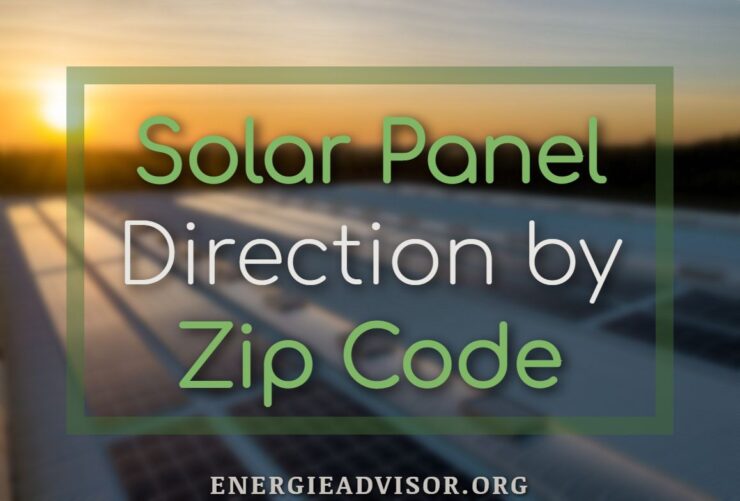You probably feel a bit confused by this title, thinking how it is that the direction of solar panels is connected to some specific zip code. Well, if you want your solar installation to provide you with the best possible production, you need to establish what the proper solar panel angle for your location is. And the zip code will pretty much tell you everything you need to know regarding this subject.
The Importance of Solar Panel Direction by Zip Code
There are several factors that will affect the level of productivity your solar system can provide. And there are things you can and those you cannot influence. For example – the weather and its movement are not something that’s possible to control, but the angle at which your panels will be elevated definitely is.
And that’s something that can play a crucial role in generating more energy from the sun. Now, when installing solar panels for home usage on top of the roof, you need to take into consideration that every location is different, and that something that’s a good solution in one state won’t be equally appreciated and effective in another. That’s because the average position of the sun that’s different in every place.
It is extremely important to establish what’s the best angle in which to position the solar panels in order to make sure they can bring the maximum out of the system. But that can be quite challenging and hard. You see, there is no one ideal position for solar panels given that the weather is always changing, and seasons are rotating nonstop. What’s a good angle for long summer days isn’t the best one for those short winter and fall daytime hours.
The solar panel experts claim that you can manage to find an adequate angle for your solar construction based on zip code. But let’s first establish why it is important for solar panels to be positioned under a certain angle, how you can calculate it, and what you will achieve by doing so.
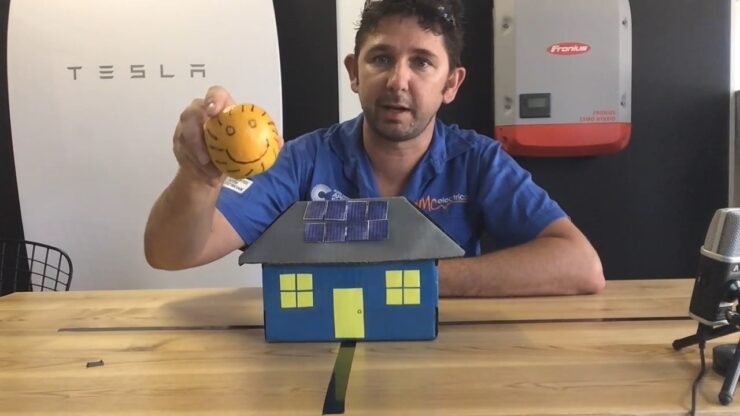
Why Do Solar Panels Need to Be Installed at a Certain Angle?
As you can suspect, the answer is pretty simple. Solar panels don’t need to be but should be positioned with a tilt angle so they could get better exposure to the sun. The idea behind the solar system is to provide solar cells with as much sunlight as possible, in order for them to generate as much electricity as possible.
The fact that the sun is moving throughout the day, as well as throughout the seasons, can make it tricky to establish the optimal solar panel angle, the one that could provide you with the most effective solar system all the time. It would be good for you to be able to change it several times during the year, but if you are not in a position to do that, then you just have to place it at an optimal angle for the most relevant season. During the summer, the sun is the highest, while during the winter, it has the lowest position.
The middle ground between these two extremes is believed to be an optimal angle for photovoltaic panels. Of course, it needs to be in correspondence with the latitude of the location of the solar panels. According to experts, if you take all that into consideration and tilt your solar system at that average angle, you will have the best possible output.
How to Calculate the Ideal Solar Panel Angle?
In order to get the exact number of degrees you can consider to be optimal for the angle of your solar panels, you can use a solar panel angle calculator, or you can do the match on your own. There are two main methods you can use in order to do that.
But bear in mind that there is a difference in calculating the optimal title angle for the summer season and the one for the winter season. The first method implies you take the latitude of the solar panel system location, and then subtract 15° to get an adequate angle for summer. For winter days, you should add 15° on your location’s latitude, while for spring and fall seasons, it would be best to simply subtract 2.5°. But, evidently, this method is not the most reliable one.
The other system you can use for angle calculation purposes will also establish the right tilt angle for each season, but it will also tell you what the best angle for the midday sun – the hottest period of each day is.
You will need to know the latitude of the place once again, then to multiply it by 0.9, and finally to subtract 23.5° in order to get the right number for summertime. For winter, repeat the first step and multiply the latitude by 0.9, and then add 29°.
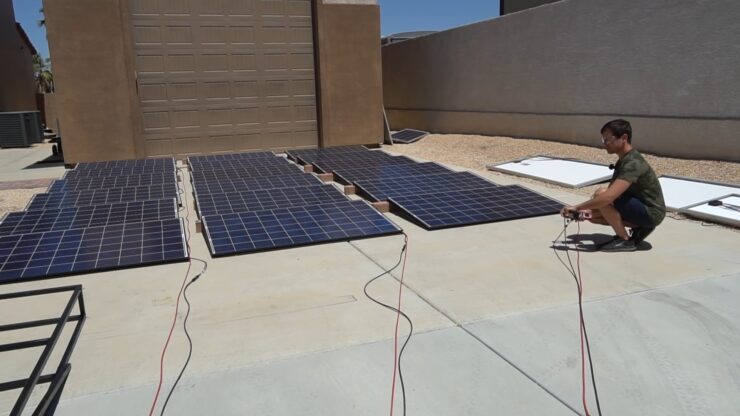
What Are Solar Trackers?
Solar trackers are devices that will do all the work regarding tilting solar panels in the best possible way on their own. If you own solar trackers, you won’t have to change the position of your solar panels manually every few months so that they can deliver the best output. Instead, trackers will make sure they are always at an optimal angle, working their best.
We are talking about a system that’s designed to constantly follow the movement of the sun in the sky in order to collect the highest amount of sunrays each day, no matter the season. But there’s a catch. They can be used only for ground-mounted solar systems, and as you know, most households have solar panels on top of their roofs.
On the other hand, even if you have solar panels placed in the ground, you should probably think twice about purchasing solar trackers, given they are pretty expensive. They will most definitely make you overstep the budget you have established.
The question is, are they worth it? Well, they are a great investment for commercial projects for sure, because these objects need to bring the maximum output all the time, but when it comes to home-related solar systems, they are really not that necessary. If you know what’s the right angle for your solar panels based on the zip code, you are covered.
What Other Factors Affect Solar Panel Angle?
When deciding how to install your solar panel system, you should consider several other things that can affect their angle:
1. The Design of the Roof
Most people decide to place a solar installation on the roof, given it won’t be on its way, and it will have the best possible exposure to the sun. Now, roofs usually have an inclination of 30 to 40 degrees, and in that case, solar panels will most likely get enough sunlight, even if they lie flat. But if the inclination is bigger, there’s a chance you won’t be able to get the best possible tilt angle for your panels.
In those cases, it can happen that the optimal angle of solar panels is lower than the roof angle. The solar experts say that the best solution in that scenario would be to leave them flat on the roof. Other extreme implies you have a low angle roof. This is definitely the better option given you can manage to achieve having the best angle for your solar panels, but that will take some time and some money.
If your roof has a very small inclination, you will have to build a specially designed racking system that will hold solar panels the right way, under the right angle. It would not be good to place the solar system directly on the roof of that king because you will always have lower output.
But the worst possible scenario is the one where you want to install solar panels on top of a completely flat roof. In that case, you will absolutely need the racking system, it won’t be a question at all. Only that way, you will be able to set solar panels at an angle you believe is the right one for your place and the season that’s coming.
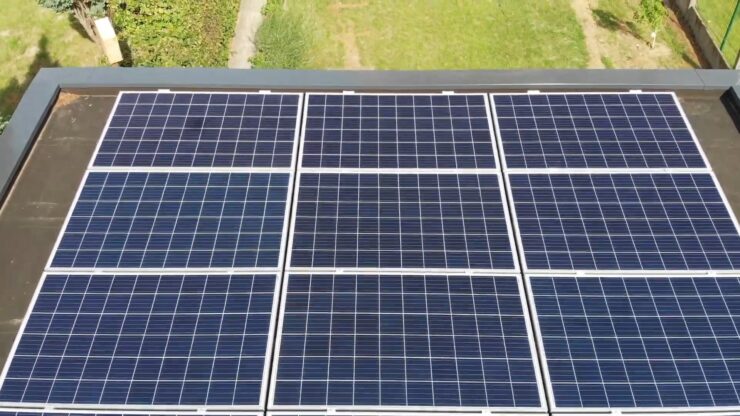
2. Solar Panels Direction
Besides the tilt angle, the outcome of your solar system can depend a lot on the direction of solar panels. Here we are talking about the Azimuth angle, which is actually a horizontal orientation of panels in relation to the equator. This aspect is perhaps more important than the optimal angle because if your solar system is not well-oriented, everything else will be less relevant. According to solar experts, solar panels should always be oriented towards the equator.
If you live in the northern hemisphere, you should position your panels in a way they always face south, and if you are in the southern hemisphere, shift the solar panels, so they face north. In case you want to check with a compass in what direction to turn your panels bear in mind that they are not always very reliable. Their inaccuracy can go up to 25 percent, but that’s not that often. Even if they miss to point to the north or south precisely, and their inaccuracy is around 10 percent, that won’t interfere with the outcome of your solar system.
3. Snow
During the winter months, the sun is pretty low in its position, and most people tend to lower the angle of their solar panels as well, in order for them to have the best possible exposure to the sun. But there is one problem – when the snow starts falling, it will probably fully cover the panel’s system.
So if you want them to continue to work even when the weather is bad, you will have to remove the snow from them or simply adjust the angle in a way that will allow the snow to slide off solar panels on its own. People who live in areas where it regularly snows during the winter keep the panels at a steep angle all the time.
4. Temperature
Solar panels are made to withstand different weather conditions, including high temperatures. But it can happen that in some places where the temperature goes extremely high, solar panels get negatively affected by it and fail to deliver the expected output.
Because of that, people in some states need to make sure there is airflow around their solar installation so that it can work properly and generate electricity at the expected level.
Solar Panel Angle by Zip Code
In order to make sure you have the best possible results each season, you should check what’s the optimal solar panel angle for your location by zip code, and hold onto that. The solar experts calculated what is the best angle for each state and city by using a solar panel direction calculator, so you don’t have to do the work on your own.
Now, if you are not in a position to change the angle of your solar panels each season, you should just keep them set up for the season that lasts the longest, or for the one during which you need your system to be the most productive. That usually means keeping solar panels tilted at an angle suitable for the summer.
If you wonder what the angles for some of the cities in the US are, we can tell you that, for instance, the optimal angle for summer in Atlanta is 80°, while for winter, it’s 32°. For Indianapolis, the recommended summer angle is 74°, and for winter 26, for Portland, it’s 68° during summer, and 46° during winter days, etc.
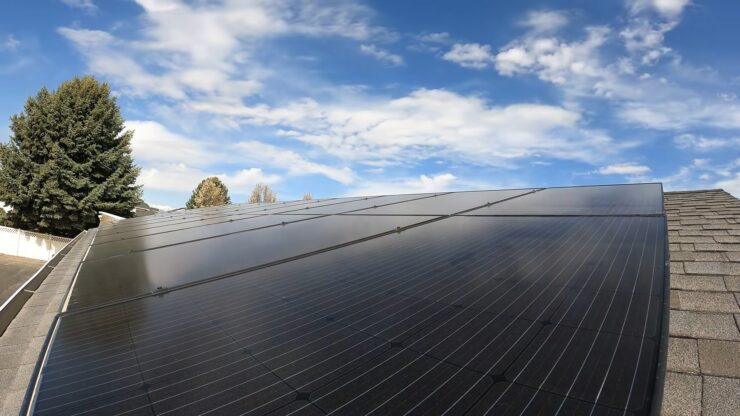
Conclusion
There is no doubt that the decision to install solar panels was the right one. Thanks to this move of yours, you will be protecting the environment, and at the same time saving a lot of money on electricity bills. Now you should just make sure you get the maximum out of your investment, and that means adjusting the system in a way that will provide you with the best possible energy output.
The tilt angle of solar panels is a crucial part of that process, and we wanted to make sure you know that. All you have to do is to establish what is the optimal angle for panels based on your zip code or simply calculate it by using one of the two methods we explained above in the text.

